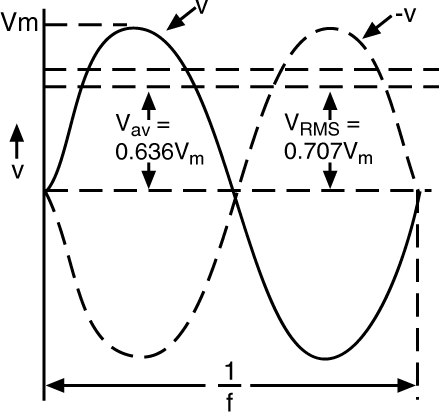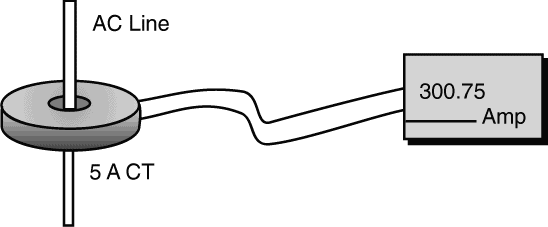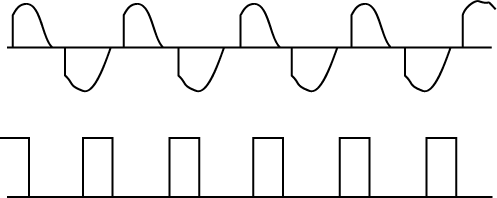| AC Voltmeters use a precision op-amp rectifier circuit to provide a general-purpose voltmeter which is calibrated to display the RMS value of sinusoidal signals. The signal is AC-coupled to eliminate the effect of DC bias. True-RMS readings are not obtained for complex waveforms with harmonics, such as square waves or AC signals which have been half-wave rectified or chopped by an SCR or triac controller. True-RMS voltmeters use an integrated circuit which computes the true root-mean-square value of complex signals. AC coupling allows the measurement of the AC component (or ripple) from a signal with both AC and DC components. DC coupling allows the measurement of total RMS, or ôheating valueö, including DC and AC components to over 30 kHz. (Maximum crest factor (Vp/Vrms) is 3:1). Screw terminals allow the selection of AC or DC coupling. True-RMS meters are especially useful in monitoring voltage and current supplied to motors or heaters controlled by an SCR or triac circuit. AC power line monitors use a simple half-wave rectifier to provide an economical AC voltmeter, which is calibrated to be accurate for sinusoidal signals around 115 or 230 Vac. Because of nonlinearity introduced by the rectified diode, the accuracy of power line monitors decreases away from the calibration point. Power line monitors are not suitable at the low end of the voltage scale, for instance with AC current shunts or current transformers.  AC
meters are used to
measure the RMS value
of sine waves, such
as AC power-line
voltage.

This diagram shows the relationships in a pure sine wave between the amplitude Vm, the mathematical half-wave rectified average Vav, and the true-RMS value VRMS. The gain of NewportÆs AC-average meters is calibrated so that meters display RMS value for sinusoidal signals. Current Transformer For AC currents over 5 A, a donut-shaped current transformer (CT) is normally used to step down the maximum current to 5 A and isolate the meter at the same time, thus avoiding common mode problems. Current transformers are available from most Newport distributors. They are specified by a turns ratio such as 100:5, where the first number is the rated input current in amps and the second number is the 5 A output. When specifying an AC or true-RMS meter for use with a 5 A CT, specify the reading desired at 5 A input to the meter. All models provide a special 5 A range, which allows direct connection to a 5 A CT, with no need for an intermediate stepdown transformer. A gain resistor inside the meter may need to be changed to provide the desired display reading. This is normally accomplished by an authorized Newport distributor. 
The INFCAC 204B, 2003B, 2004 and QUANTA« include a special range, which allows direct connection to a 5 A current transformer, with no need for a stepdown transformer. The current transformer adds to safety and avoids common mode noise by isolating the signal. |
HOME / PRODUCT GUIDE / TECHNICAL REFERENCE
NEWPORT Electronics, Inc. (714) 540-4914 or Contact Us
Copyright 1998, NEWPORT Electronics, Inc. All rights reserved.

